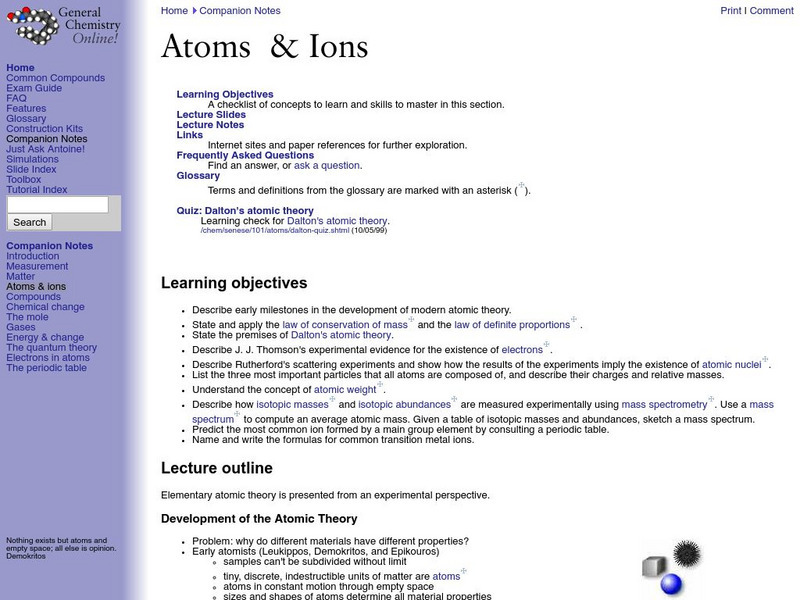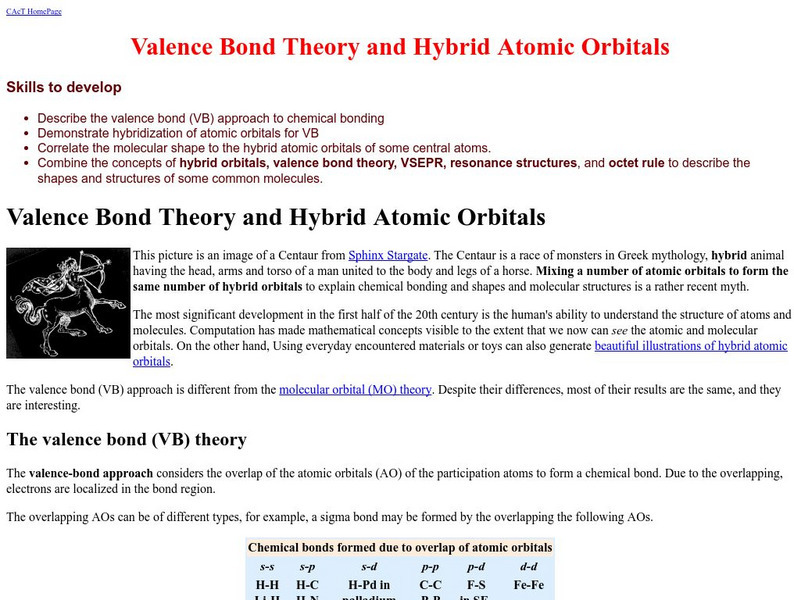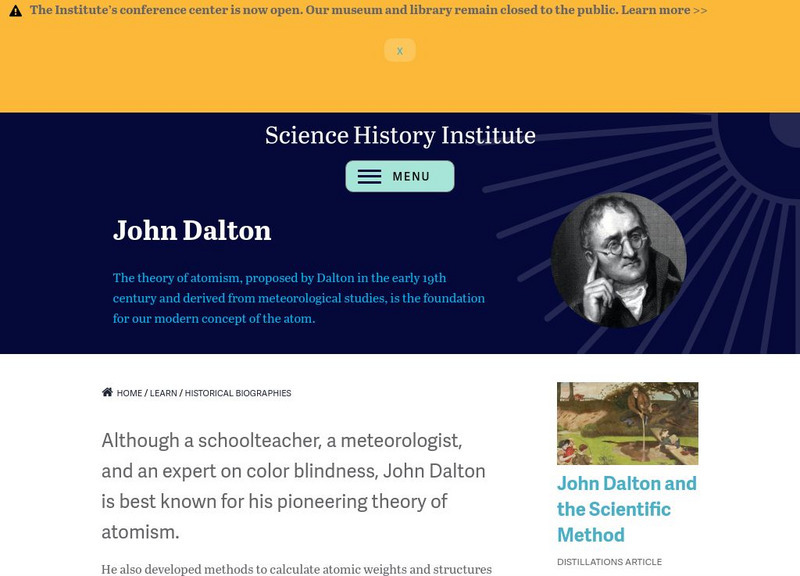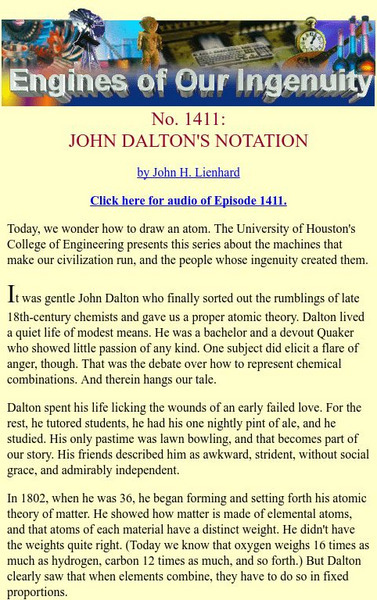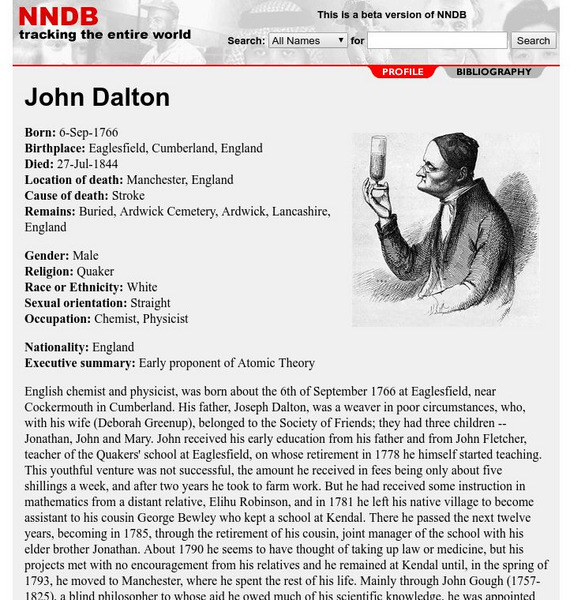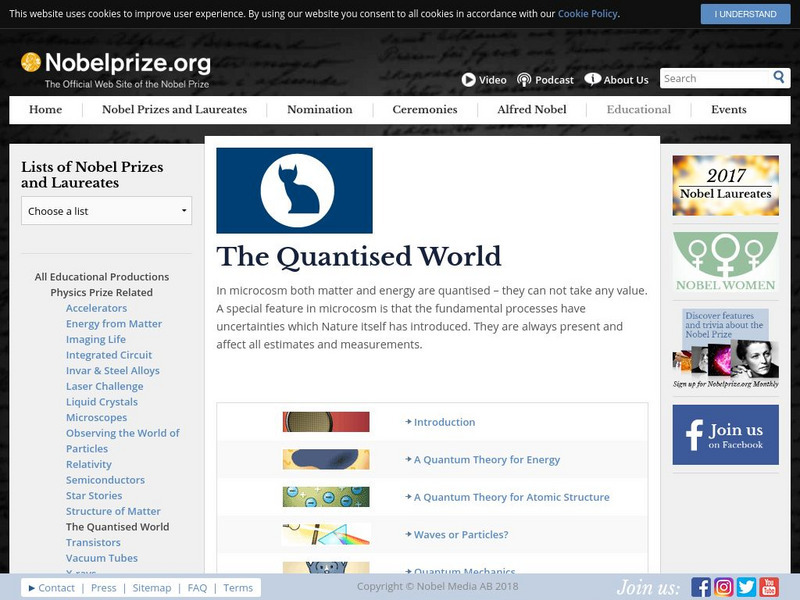Nobel Media AB
The Nobel Prize: The Nobel Peace Prize 1962
Read about Linus Carl Pauling, the winner of the 1962 Nobel Peace Prize. This website is organized into the following sections: "Presentation Speech," "Biography," "Nobel Lecture," "Other Resources," and "The Nobel Chemistry Prize 1954."
TeachEngineering
Teach Engineering: Mixtures and Solutions
This unit covers introductory concepts of mixtures and solutions. Students think about how mixtures and solutions, and atoms and molecules can influence new technologies developed by engineers. The first lesson explores the fundamentals...
PBS
Pbs: A Science Odyssey
Website for the PBS series "A Science Odyssey." Numerous opportunities to explore the people and discoveries of science.
University of St. Andrews (UK)
University of St. Andrews: Wolfgang Pauli
Check out this short look at the life of 1945 Nobel Prize winner, Wolfgang Pauli. Make sure to look at all the links at the bottom of the page too.
Science Struck
Science Struck: Plum Pudding Model
Describes J.J. Thomson's theory of atomic structure, called the 'Plum Pudding Model,' and how it was disproved by Ernest Rutherford.
Cosmo Learning
Cosmo Learning: Ap Chemistry With Chemguy
Need to review a topic for AP Chemistry? This site features a collection of video lectures covering the curriculum of AP Chemistry. The lectures are broken up by topics and vary in length. Lectures cover thermodynamics, bonding,...
Lawrence Berkeley National Laboratory
Berkeley Lab: The Atom
Presented is an overview of atomic theory concentrating on the experiments of Ernest Rutherford.
Sophia Learning
Sophia: John Dalton: Lesson 2
This lesson reviews Dalton's Atomic Theory and explains each of the points.. It is 2 of 3 in the series titled "John Dalton."
Sophia Learning
Sophia: John Dalton: Lesson 1
This lesson reviews Dalton's Atomic Theory and explains each of the points.. It is 1 of 3 in the series titled "John Dalton."
CK-12 Foundation
Ck 12: Chemistry: Bohr's Atomic Model
[Free Registration/Login may be required to access all resource tools.] Explains the basic principles of the Bohr hydrogen atom.
Other
Slide Player: History of the Atomic Model
Short slideshow looking at the history of models of the atom, including the contributions of Aristotle, Democritus, John Dalton, J.J. Thomson, Ernest Rutherford, and Niels Bohr.
Khan Academy
Khan Academy: Bohr's Model of Hydrogen
How Bohr's model of hydrogen explains atomic emission spectra.
Frostburg State University
General Chemistry Online: Atoms & Ions
This site from the General Chemistry Online of the Frostburg State University provides a review of the history of atomic theory, the discovery of the electron, and the discovery of the nucleus. Details on weighing atoms, ion charges,...
CK-12 Foundation
Ck 12: Chemistry Simulation: Rutherford's Gold Foil Experiment
[Free Registration/Login Required] How can we predict an atom's structure, if we cannot see an atom? Using the Rutherford's Gold Foil Experiment, make your own model and test out the model.
University of Waterloo (Canada)
University of Waterloo: Valence Bond Theory and Hybrid Atomic Orbitals
Provides good objectives to go along with a text discussion of hybridization. Complete with illustrations, charts, and graphics.
Other
Chemical Heritage Foundation: John Dalton
This interesting site has a biography of John Dalton as well as other influential scientists in the field of chemistry.
University of Wisconsin
The Why Files: Learning About Neutrinos
A learning resource to understand what neutrinos are and their importance to science.
University of Houston
University of Houston: Engines of Our Ingenuity: John Dalton's Notation
This is part of a small radio show at the University of Houston. It talks about how John Dalton came up with his version of chemical notation, and how it differs from our version of it today. It is available in audio form also.
Soylent Communications
John Dalton
A very thorough biography of John Dalton on this site made by Notable Names Database. Also gives the names of books that were written about him or his ideas.
Nobel Media AB
The Nobel Prize: Max Planck Biographical
A biography of Max Planck, covering his research interests and contributions to science, as well as more personal information about his family and life.
Sophia Learning
Sophia: Democritus
A guided lesson explaining Democritus' description of matter as discontinuous.
National Institute of Standards and Technology (NIST)
Nist: Bose Einstein Condensation in Dilute Atomic Vapor
Gives a brief introduction to Bose-Einstein Condensation (BEC) and how it was demonstrated at a laboratory at the NIST.
Nobel Media AB
The Nobel Prize: The Quantised World
After an introduction, this site breaks down into sections discussion quantum theory, including A Quantum Theory for Energy, A Quantum Theory for Atomic Structures, Waves or Particles, Quantum Mechanics, and Interpreting the Quantum World.
Stanford University
Stanford Encyclopedia of Philosophy: Democritus
A look at the life of Democritus of Abdera. He helped to develop a theory of atomism, explained in detail here. Other significant ideas he had included his theory of perception, a theory of the soul and its relationship to living things,...













